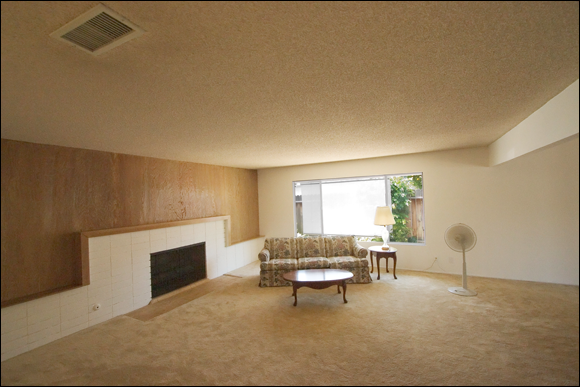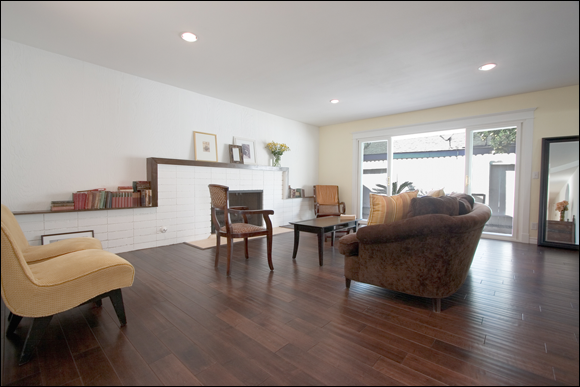IN THIS CHAPTER
 Swapping out windows for a whole new look
Swapping out windows for a whole new look
 Refining your entrances and exits
Refining your entrances and exits
 Giving your house a new floor show
Giving your house a new floor show
As a quick-flip artist, you search for properties that look worse than they really are with the hope that a quick makeup job is all the house really needs. But sometimes even a great property needs a more intensive facelift — maybe all new windows, a fancy new front door, or great new flooring — to bring it to life.
In this chapter, I show you how to tackle some moderate makeovers that can improve the quality of the home, increase its value and marketability, and attract buyers.
Installing Replacement Windows
When you’re flipping a house with worn, aging windows in a neighborhood where most homes have updated windows, replacing the windows becomes a necessity. New windows not only look nice, but they also conserve energy and make window washing a lot easier. Figures 18-1 and 18-2 demonstrate the appeal of new windows. The bedroom looks plain with old windows, but new windows make a stylish difference.
In the following sections, I discuss different window options and provide a few tips on cutting the costs of new windows.
 When you design your marketing flyers (see Chapter 21), highlight the fact that the house has all new windows, and make sure that the MLS listing includes information about the new windows (see Chapter 7 for more about the MLS). This tactic not only advertises the new windows to potential buyers but also passes the word along to the appraiser.
When you design your marketing flyers (see Chapter 21), highlight the fact that the house has all new windows, and make sure that the MLS listing includes information about the new windows (see Chapter 7 for more about the MLS). This tactic not only advertises the new windows to potential buyers but also passes the word along to the appraiser.
Knowing your window options
 When shopping for new windows, call around for estimates. Every town and city in the country has plenty of window installers and building supply stores with a wide selection of windows. Building supply stores typically carry a selection of standard-size windows, or you can order custom windows if the window openings aren’t standard sizes. Windows also vary based on how you install them:
When shopping for new windows, call around for estimates. Every town and city in the country has plenty of window installers and building supply stores with a wide selection of windows. Building supply stores typically carry a selection of standard-size windows, or you can order custom windows if the window openings aren’t standard sizes. Windows also vary based on how you install them:
- New-construction windows: If you’re going to re-side the house (see Chapter 16), consider buying new-construction windows and having your contractor install them before hanging the new siding. New-construction windows attach to the studs on the outside of the house. If the house is stucco or brick, new construction windows aren’t an option.
- Replacement windows: Replacement windows include a frame that fits in the old window opening. You remove the old sashes and any sliding mechanism that’s in place and mount the new window in the opening. You usually have to remove some trim, but if you’re careful, you can reuse the old trim. The best part of this job is that it doesn’t require a ladder. Installation is an inside job.
If you’re flipping a high-end house, stick with the top brands, including Andersen and Pella. For lower-end homes, middle-of-the-line vinyl or fiberglass replacement windows are sufficient.
 You can add a nice touch to a kitchen or dining-room window by replacing a standard window with a garden window. A garden window is like a small bay window that juts out from the house.
You can add a nice touch to a kitchen or dining-room window by replacing a standard window with a garden window. A garden window is like a small bay window that juts out from the house.
Trimming the cost of new windows
 Most window companies make more money on the installation of new windows than on the windows themselves, mostly because installing windows doesn’t require a great deal of expertise. The two critical tasks in window installation are measuring the existing opening and making sure that the window is square. You can significantly cut the costs of replacing windows by doing one of the following:
Most window companies make more money on the installation of new windows than on the windows themselves, mostly because installing windows doesn’t require a great deal of expertise. The two critical tasks in window installation are measuring the existing opening and making sure that the window is square. You can significantly cut the costs of replacing windows by doing one of the following:
- Buy locally. The window companies that advertise on TV have the highest markups to pay for all the advertising. For more competitive prices, check your local phone book or hardware store.
- Do it yourself. If you’re handy with a tape measure, square, and screwdriver, consider doing it yourself and saving the cost of labor.
- Hire a subcontractor. If you see workers installing windows in the neighborhood, pay them a visit. They’re generally subcontractors working for a big window company. Ask them the best place to buy windows. If the installers are entrepreneurs, they usually offer to look at your house and provide an estimate. This enables you to cut out the middleman and directly hire professional installers for a lot less. Just be sure that the subcontractor has his own insurance or is insured under your homeowner’s policy, as I explain in Chapter 4.
- Hire a handyman. Buy windows at your local building supply store and hire a handyman to install them. See Chapter 4 for full details on hiring subcontractors and handymen.
 A good installer spends time measuring the existing window openings and ordering the right-sized windows. Measuring is the most critical step during the installation. Some installers cut corners by ordering windows that give them plenty of room for error, and then they shove a bunch of insulation around the frame and tack up the trim to hide the huge gaps. Measure the window openings yourself and compare measurements before ordering the windows. If you see discrepancies, ask the installers to explain.
A good installer spends time measuring the existing window openings and ordering the right-sized windows. Measuring is the most critical step during the installation. Some installers cut corners by ordering windows that give them plenty of room for error, and then they shove a bunch of insulation around the frame and tack up the trim to hide the huge gaps. Measure the window openings yourself and compare measurements before ordering the windows. If you see discrepancies, ask the installers to explain.
Replacing Drab, Weathered Doors
Savvy buyers inspect every door in the house. When they walk through a doorway, they can’t help but notice the door, and many buyers open and close the doors to make sure that they’re working properly. Home inspectors follow the same routine, so you want your doors and doorways to look nice and function properly. If you have a sliding glass door that takes a gorilla to shove open, you have a problem.
In the following sections, I lead you through the process of ensuring that all the doors in your house meet market demands and steer you clear of the types of doors that can lead to problems.
Doing the quick fix with a new storm door
Storm doors are notorious problem areas. In a strong wind, a storm door acts as a sail, catching the wind broadside, which nearly rips it off its hinges. Over time, the screens rip, the metal gets dented, and the rod on the door closer gets bent.
Because the storm door or screen door is on the outside of the house, it often contributes more to curb appeal than the main entry door itself. If it looks bad, replace it. You can purchase a quality storm door for around $100 and install it yourself in an hour or two. Standard white is typically the color of choice, but check out the neighborhood to see whether another color predominates.
Replacing an entry door
You may think that entry doors never go out of style, but some of the old designs look about as appealing as a leisure suit. Walk around the neighborhood and check out the entry doors. Chances are that one or two of your neighbors have already replaced their doors with something more appealing or more secure.
Your entry door should help your house blend with the neighborhood. Installing a $500 fiberglass entry door with leaded glass in a neighborhood where solid wood doors are prevalent may make the house look gaudy instead of adding a touch of class. In most areas, a solid door with a nice stain or a fresh coat of paint that complements the exterior colors is sufficient for achieving the desired curb appeal.
 Organizations like Habitat for Humanity often have stores where you can pick up scratch-and-dent doors and other building materials at bargain prices. You can purchase a quality metal door that’s dented, patch it with auto body filler, sand it down, and paint it, and have a beautiful entry door for less than $100.
Organizations like Habitat for Humanity often have stores where you can pick up scratch-and-dent doors and other building materials at bargain prices. You can purchase a quality metal door that’s dented, patch it with auto body filler, sand it down, and paint it, and have a beautiful entry door for less than $100.
If the entry door opens and closes easily but just looks bad, consider refinishing it rather than replacing it. See Chapter 16 for more about jazzing up an entry door.
Repairing or replacing sliding glass doors
If you’ve ever seen a real estate agent or a buyer grapple with a stubborn sliding glass door, you know that these doors aren’t the best when it comes to selling houses. The tracks gather dust and dirt, the rollers get gummed up, and over time you wonder what the manufacturer meant by “sliding.” In the following sections, I provide tips on improving the operation of sliding glass doors and recommend some more-appropriate replacement doors.
Fixing a sliding door that’s lost its slide
 When your patio door loses its slide, it’s time for a cleaning and lube job. Take the following steps to place the glide back in the slide:
When your patio door loses its slide, it’s time for a cleaning and lube job. Take the following steps to place the glide back in the slide:
-
Use a toothbrush or a paintbrush with stiff bristles to loosen the dirt and grease that has gathered in the tracks, and then vacuum the debris out.
Clean the track both with the door open and with it closed so you cover all your tracks. If you use a toothbrush, make sure to use your spouse’s and not yours!
- Spray a lubricant on the tracks and slide the door back and forth on the track to get it lubed up.
-
If you still have trouble opening and closing the door, play with the adjustment screws at the top and bottom of the door.
These screws raise or lower the wheels that ride on the tracks.
- If you can get to the wheels, spray some lubricant on them.
- Lube the lock by removing it and spraying it with a lubricant.
Replacing patio doors for a whole new look
When I install new patio doors on a house, I never install the sliding variety. Single or double French doors (the ones that open like normal doors) require much less maintenance, and you don’t have to throw your back out opening them. Figures 18-3 and 18-4 demonstrate the improvement you can expect to see when you install a new patio door. Of course, several other upgrades, including hardwood flooring, a redone fireplace, and recessed lighting, also contribute to giving this particular room a whole new look.
 In a house that has no clear exit to the backyard, one of the best ways to improve the marketability of the house is to add a door. See Chapter 19 for details about creating a new doorway and performing other more-extensive renovations.
In a house that has no clear exit to the backyard, one of the best ways to improve the marketability of the house is to add a door. See Chapter 19 for details about creating a new doorway and performing other more-extensive renovations.
Installing new interior doors
Interior doors on bedrooms, dens, and bathrooms can take a beating, especially if the previous owners were door slammers or had neurotic pets who liked to scratch and chew doors. Make sure that the interior doors open and close easily and completely and that they look good, too. Depending on the condition of the doors, you have several options here:
- Change the hardware. If you have trouble opening and closing a door, you may need to change the doorknobs and install new hinges, which are fairly easy do-it-yourself repairs.
- Refinish the doors. If the finish is dull or scratched, remove the doors, sand them, and stain them so all the doors in the house match and look fresh.
- Replace the doors. If someone punched a hole through the door or it has deep scratches, consider replacing the door. An average interior door unit, complete with trim, costs around $100 and is about as easy to install as a replacement window. If your carpentry skills aren’t up to snuff, consider hiring an installer or handyman.
Putting on Your Own Floor Show
New flooring is a necessity in a house that has well-trafficked, old, or damaged floors. In most rooms, new wall-to-wall carpeting is the most cost-effective option and provides you with the biggest bang for your buck (see Chapter 15 for details). In kitchens and bathrooms, however, you almost always need to lay new vinyl, linoleum, or ceramic tile, and you should sand and refinish any hardwood floors.
You may not get all your money back on the cost of refinishing floors or installing new flooring, but it’s still a good investment. After you paint the house and install new light fixtures, registers, and faceplates, old flooring can make the house look like a dirt-floor hut. In the following sections, I show you several options for new flooring.
Laying vinyl or linoleum flooring
Next to carpeting, vinyl and linoleum are the most affordable flooring options, and because they resist water, they’re perfect for kitchens, bathrooms, and laundry rooms. In addition, if the existing floor isn’t warped or damaged, you can apply a new layer of vinyl or linoleum over the old. Costs are comparable for linoleum and vinyl, although linoleum tends to last about three times longer and is considered the “green” (environmentally friendly) option.
 For bathrooms, laundry rooms, and other areas that get drenched, install sheet vinyl rather than the square tile vinyl or linoleum. Water tends to seep between the edges where the tiles meet and get under the tile, completely ruining the floor. Whether you install vinyl or linoleum, consider hiring an experienced flooring installer; gluing down tiles may sound easy, but installers have the right technique for making sure the tile lies flat and meets the walls just right.
For bathrooms, laundry rooms, and other areas that get drenched, install sheet vinyl rather than the square tile vinyl or linoleum. Water tends to seep between the edges where the tiles meet and get under the tile, completely ruining the floor. Whether you install vinyl or linoleum, consider hiring an experienced flooring installer; gluing down tiles may sound easy, but installers have the right technique for making sure the tile lies flat and meets the walls just right.
Refinishing hardwood floors
In the 1970s and 1980s, sellers commonly hid their hardwood floors under a layer of cheap wall-to-wall carpeting, as if the hardwood was an ugly blemish. Now, when you stumble upon a house that has hardwood floors, it’s almost like striking gold.
 Many do-it-yourselfers choose to sand and refinish hardwood floors themselves, something I discourage. Floor sanders have a nasty habit of taking off on you and digging deep gouges into the floor. If you don’t know what you’re doing, you can easily sand a hole clear through the flooring! And if you don’t apply the stain just right, the finish appears splotchy. Hire a professional.
Many do-it-yourselfers choose to sand and refinish hardwood floors themselves, something I discourage. Floor sanders have a nasty habit of taking off on you and digging deep gouges into the floor. If you don’t know what you’re doing, you can easily sand a hole clear through the flooring! And if you don’t apply the stain just right, the finish appears splotchy. Hire a professional.
Laying new hardwood or laminate flooring
In a room that has damaged or severely worn hardwood floors and in rooms with carpeting or vinyl that are crying out for a touch of wood, consider having new hardwood or laminate flooring installed. As Figures 18-5 and 18-6 demonstrate, a new wood floor adds class and distinction to a home.
After you decide to put down new wood flooring, you have a decision to make: hardwood or laminate flooring? Most home buyers drool over hardwood floors, and they get pretty excited about laminate floors, which look like wood and cost about the same but clean up like tile. Personally, I prefer hardwood because it looks classier and lasts longer, and you can refinish it when it starts to look bad, but let your market be your guide.
 Both hardwood and laminate look great, assuming they’re properly installed. Hire a craftsman, not a butcher. Ask for references and then visit the homes where the installer laid the floor.
Both hardwood and laminate look great, assuming they’re properly installed. Hire a craftsman, not a butcher. Ask for references and then visit the homes where the installer laid the floor.
Laying ceramic tile for a touch of class
Homeowners love the look of ceramic tile flooring, but after they live in a house that has it in the kitchen or bathroom, they often change their minds. Drop a glass on a ceramic tile floor, and it shatters into a million pieces that fly everywhere. And if the tile gets a little grease and water on it, watch out! You’ll be sliding right out of the kitchen.
However, you can install ceramic tile in the foyer — the area near the front door where visitors typically kick off their shoes. Tile not only looks nice, but it also makes this area easier to keep clean through your many house showings.
If the market demands ceramic tile floors, you need to meet those demands. If it doesn’t, stick with vinyl or linoleum, which I cover earlier in this chapter.
 At $10 to $15 per square foot, ceramic tile is the most expensive flooring option. Assuming the tiles don’t crack or chip, they last forever, but even so, you probably won’t see a big return on investment by choosing ceramic tile over vinyl. Some vinyl tile options look suspiciously like their ceramic equivalents.
At $10 to $15 per square foot, ceramic tile is the most expensive flooring option. Assuming the tiles don’t crack or chip, they last forever, but even so, you probably won’t see a big return on investment by choosing ceramic tile over vinyl. Some vinyl tile options look suspiciously like their ceramic equivalents.
 Swapping out windows for a whole new look
Swapping out windows for a whole new look Refining your entrances and exits
Refining your entrances and exits Giving your house a new floor show
Giving your house a new floor show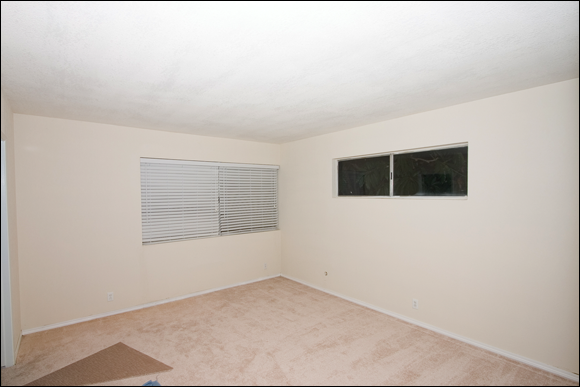
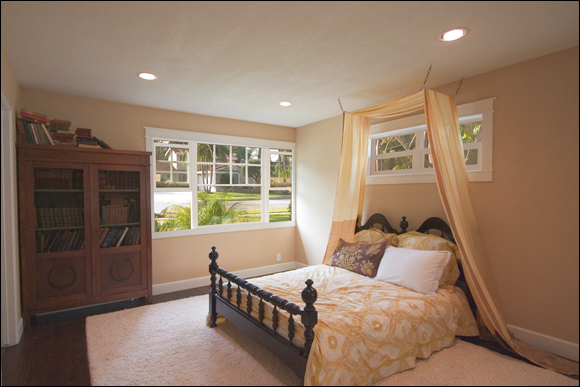
 When you design your marketing flyers (see
When you design your marketing flyers (see  When shopping for new windows, call around for estimates. Every town and city in the country has plenty of window installers and building supply stores with a wide selection of windows. Building supply stores typically carry a selection of standard-size windows, or you can order custom windows if the window openings aren’t standard sizes. Windows also vary based on how you install them:
When shopping for new windows, call around for estimates. Every town and city in the country has plenty of window installers and building supply stores with a wide selection of windows. Building supply stores typically carry a selection of standard-size windows, or you can order custom windows if the window openings aren’t standard sizes. Windows also vary based on how you install them: 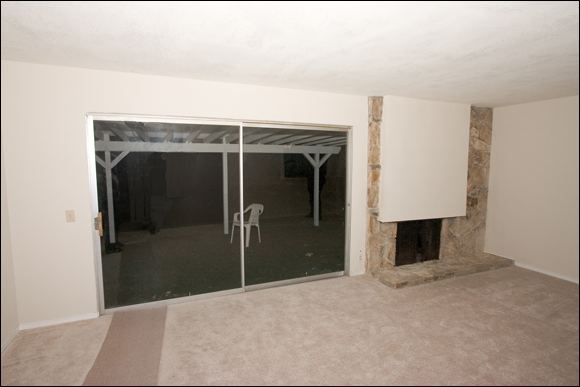
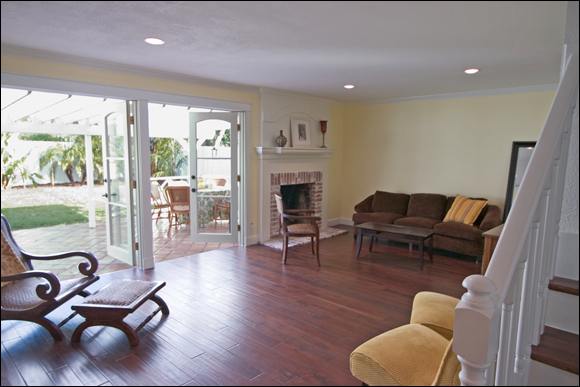
 Many do-it-yourselfers choose to sand and refinish hardwood floors themselves, something I discourage. Floor sanders have a nasty habit of taking off on you and digging deep gouges into the floor. If you don’t know what you’re doing, you can easily sand a hole clear through the flooring! And if you don’t apply the stain just right, the finish appears splotchy. Hire a professional.
Many do-it-yourselfers choose to sand and refinish hardwood floors themselves, something I discourage. Floor sanders have a nasty habit of taking off on you and digging deep gouges into the floor. If you don’t know what you’re doing, you can easily sand a hole clear through the flooring! And if you don’t apply the stain just right, the finish appears splotchy. Hire a professional.